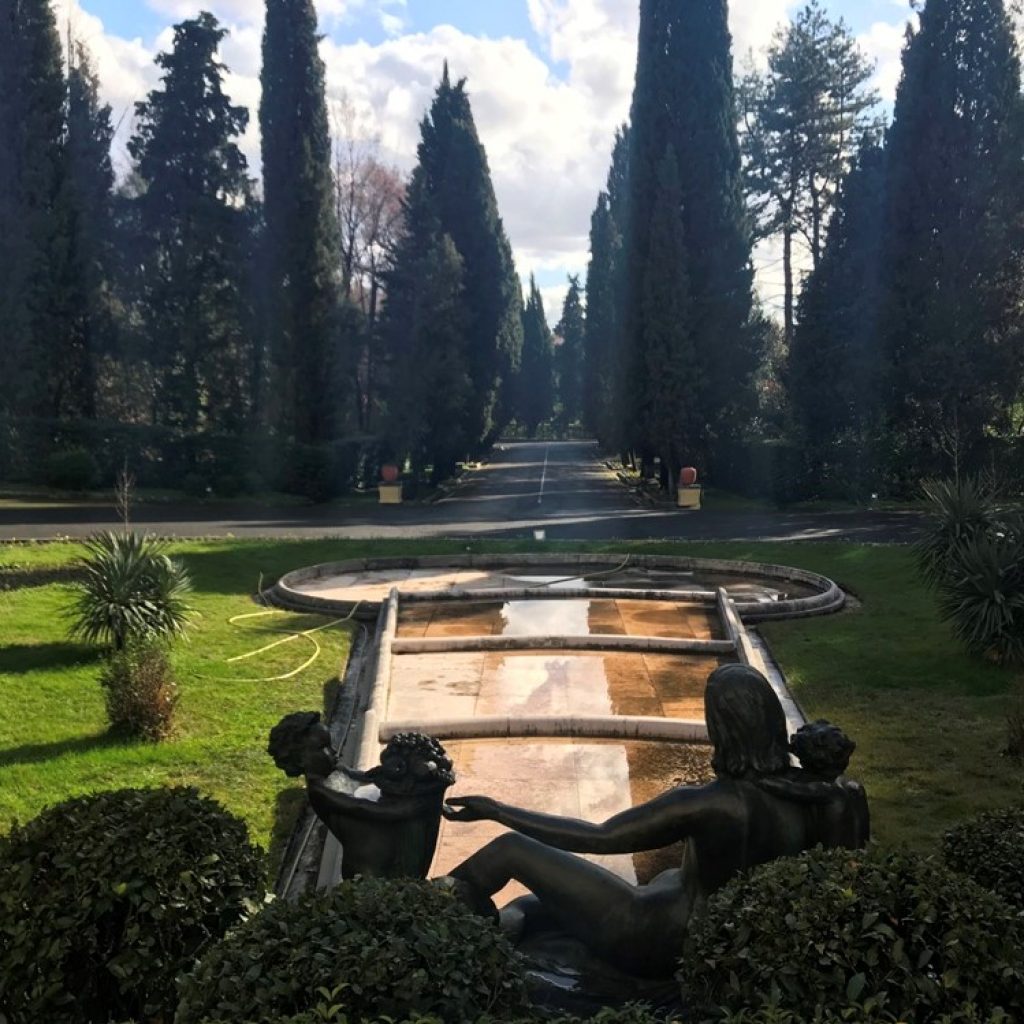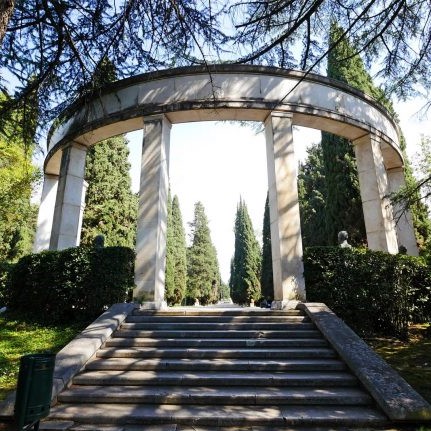History:
The idea to build a royal palace on one of the hills of Sauk, near what was later to become the Grand Park of Tirana, was first conceived by King Zog I in the 1930s. Because of the limited funds of the nascent Albanian state, the then Minister of Finance, Mufid Libohova, entered into negotiations with a group of Italian financiers represented by Mario Alberti. An agreement was made for the opening of a national bank and for a loan of 50,000,000 gold francs (approximately 10,000,000 gold dollars). Part of this loan, also called “The SVEA Loan”, was earmarked for the construction of his official residence, making it possible for the King to secure the funds to build the Royal Palace. The new palace was designed by three Italian architects, including Giulio Berte. Due to the outbreak of the Second World War, and the 1939 Italian Invasion of Albania, King Zog I fled Albania and never had a chance to see the palace fully constructed. The Italians finished construction and used the palace mainly for the Army Headquarters. The building was redesigned and completed in 1941, by the Florentine architect Gherardo Bosio.


The building served as a functioning Royal palace only once, for King Vittorio Emanuele III of Italy during his only visit to Albania in May 1941. During the remainder of the Second World War, it served as the official residence for Francesco Jacomoni, the first Luogotenente del Re (the title of the Italian Viceroy), and later for his successor, the fascist general Alberto Pariani. Both lived there along with their families. After Italy capitulated in September 1943, the Albanian officer who served the palace hid the Palace’s official flag from the Germans and sent it to Italy, where it remained until 2003, when it was purchased by Artan Lame and returned to Albania. After the German takeover of the country in September 1943, the Albanian parliament convened in the Palace and proclaimed the detachment of the Albanian Crown from the Italian Crown.
In 1945 the palace was renamed as the Palace of the Brigades, a name which remained in use throughout the Communist regime, and is still used popularly and by the Albanian media. During the Communist regime it served mainly as a government reception facility.
The official name of the palace was changed after the fall of the Communist regime in 1992 as the Presidential Palace.
In January 2010, the Municipality of Tirana proposed that parts of the palace be opened to the general public.
On 8 October 2016, Leka II, pretender to the throne of Albania, was allowed by the Albanian authorities to organise the wedding reception of his marriage to Ms. Elia Zaharia inside the premises of the Presidential Palace.

